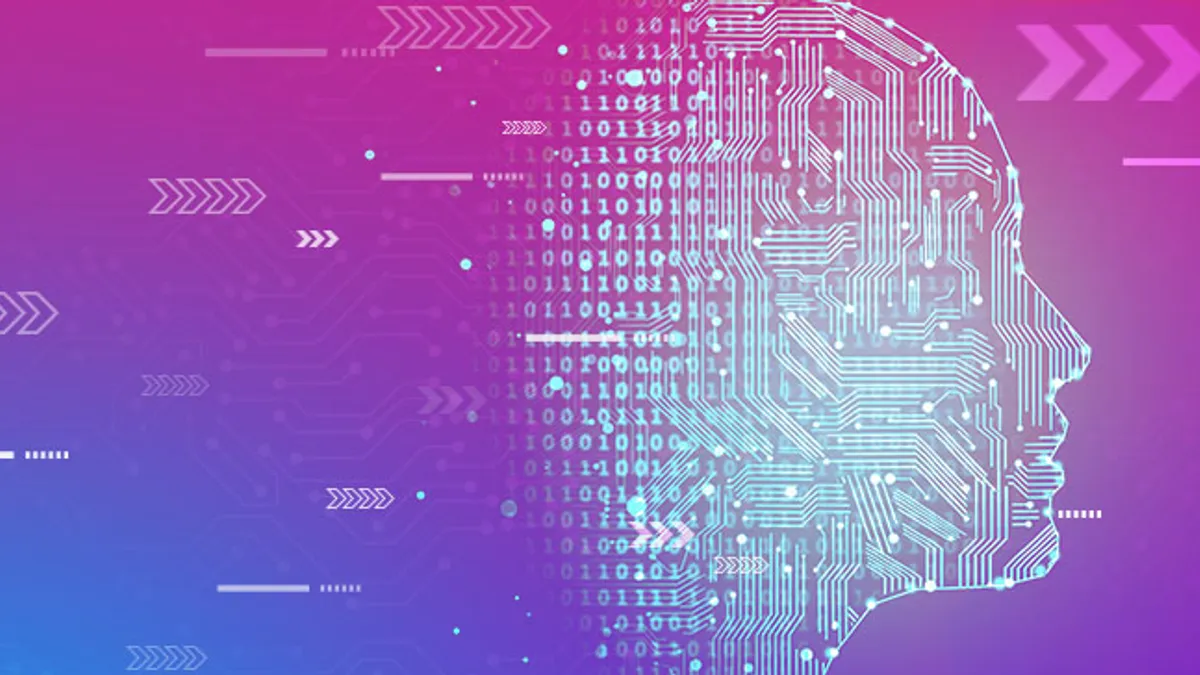Mention artificial intelligence when discussing language services and most people would agree that machine learning has led to faster translation and localization. But has it made them better?
In a recent Industry Dive survey of 172 marketing executives, more than half noted that while AI was a critical component for language services, when having content translated or localized for their markets, simplicity was still very much a pain point.
Indy Nagpal, chief platform officer for Straker Translations, said it didn't have to be this way.
"The trick is to build a system that can cater to the time sensitivities and also be able to maintain the quality," he said. With AI leading to advances in translation memory and new efficiencies in workflows, these systems are being put into practice.
Straker Translations co-founder and Chief Operating Officer Merryn Straker said she could see — even a decade ago — how machine learning was poised to disrupt the entire industry, she said.
"We actually had a firm belief that this was going to disrupt a pretty traditional industry and that it wasn't going to replace humans, but that it was going to really be about humans and machines working together," she said.
Chris Reid, CEO of Stretch Creative, said he sees the effect. While working on product descriptions for Fortune 500 clients — in batches of 25,000 to 50,000 at a time — his team depends on solutions that achieve not only speed and scale but also accuracy.
"The way we speak about products for clients in fashion and apparel is very different from the way an industrial client might communicate about hydraulic pumps, for example," Reid said. "Different words truly matter."
This is where translation memory comes into play, Nagpal said. AI advances allow a client's past translation history to easily influence future work.
"For example, if a file comes in, it automatically gets analyzed," he said. Automated systems review the copy and break it up into segments before human reviewers and validators (including a client's own team, at their discretion) audit the content for appropriate nuance and terminology, based on localized turns of phrases or the language of a particular industry. That work then becomes part of the data the automated system will use to "learn," making the next translation faster and more accurate, he said.
"So if a piece of content has been translated from English to Spanish in the past, the next time a similar piece of content comes around for translation, the system has the smarts built into it to figure out, 'oh, something like this has been translated before … so let's suggest that it be translated in this way.' " By leveraging machine learning, once the document gets to human review, the speed and accuracy of the translation is greatly improved, he said.
It's something Reid sees firsthand in the work his team produces for a client in Canada.
"French Canadian is a very challenging language to translate," Reid said. "So [through automation] Straker loops in all their feedback about 'this is the tone, this is the voice.' We have about 45 writers and editors on this project alone, and so to do this at scale, the innovation has helped get this project to the finish line without a major gap in the production schedule."
Nagpal said this is one of two ways AI was changing translation.
"Segmentation across all languages provides a really good basis to have a lot of data," Nagpal said. "Then you use that data as you go forward, and you build layers on top of it. And those layers are in workflows."
Advancements in AI make it easier for providers of language services to streamline internal processes, he said.
"For example, because we have a lot of data points, we can do things like figuring out who is the best translator for a given job," he said. This builds efficiencies into the project, he said, which can also serve as a vehicle to lower costs and speed up delivery of translated content for the client.
This approach also helps improve accuracy, Straker said.
"We have translators who specialize in particular subject matter domains," she said. "So it's not the same translators you would be using for human resources content versus marketing content, versus sales or technical content. … We can use our data to understand the best translators that should be working on a job."
Reid said he and his team can see the long term value in this approach.
"It doesn't mean machine learning can lower costs or increase margins," he said. "It's to create efficiencies and then bring in our humans to make sure [the translation] meets the objective, not only for the project, but for the people who are going to be consuming this content — especially to make some sort of purchase decision."
It all comes down to trust, he said, and having a translation partner leverage AI to improve quality can make a real difference.
Merryn Straker agreed.
"What you're having to do is build trust in your language-services provider that they can go out and source the right linguist to be doing this work and deliver for you the right service offering that you're looking for within your price point," she said. "We partner with our clients to have the best outcome."










